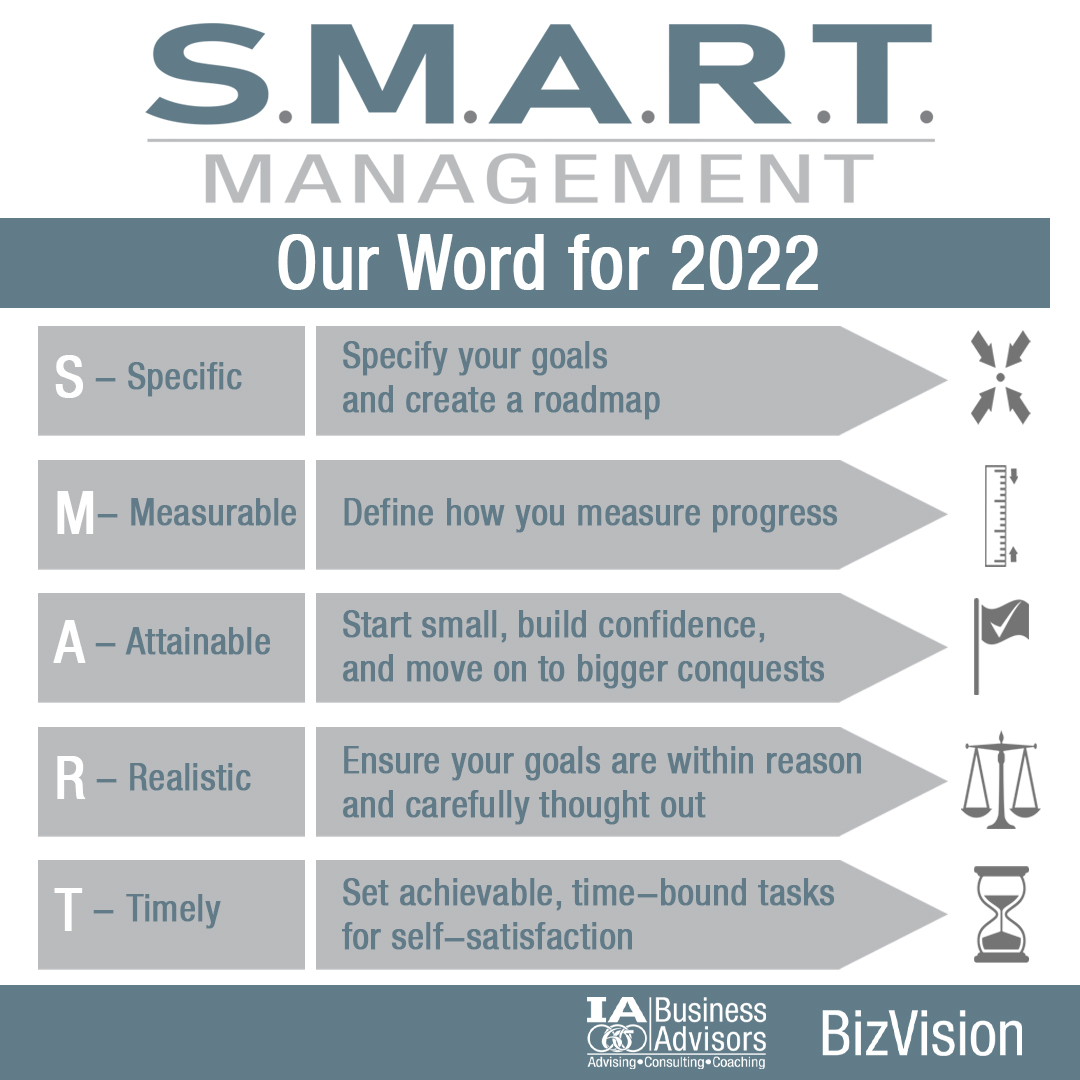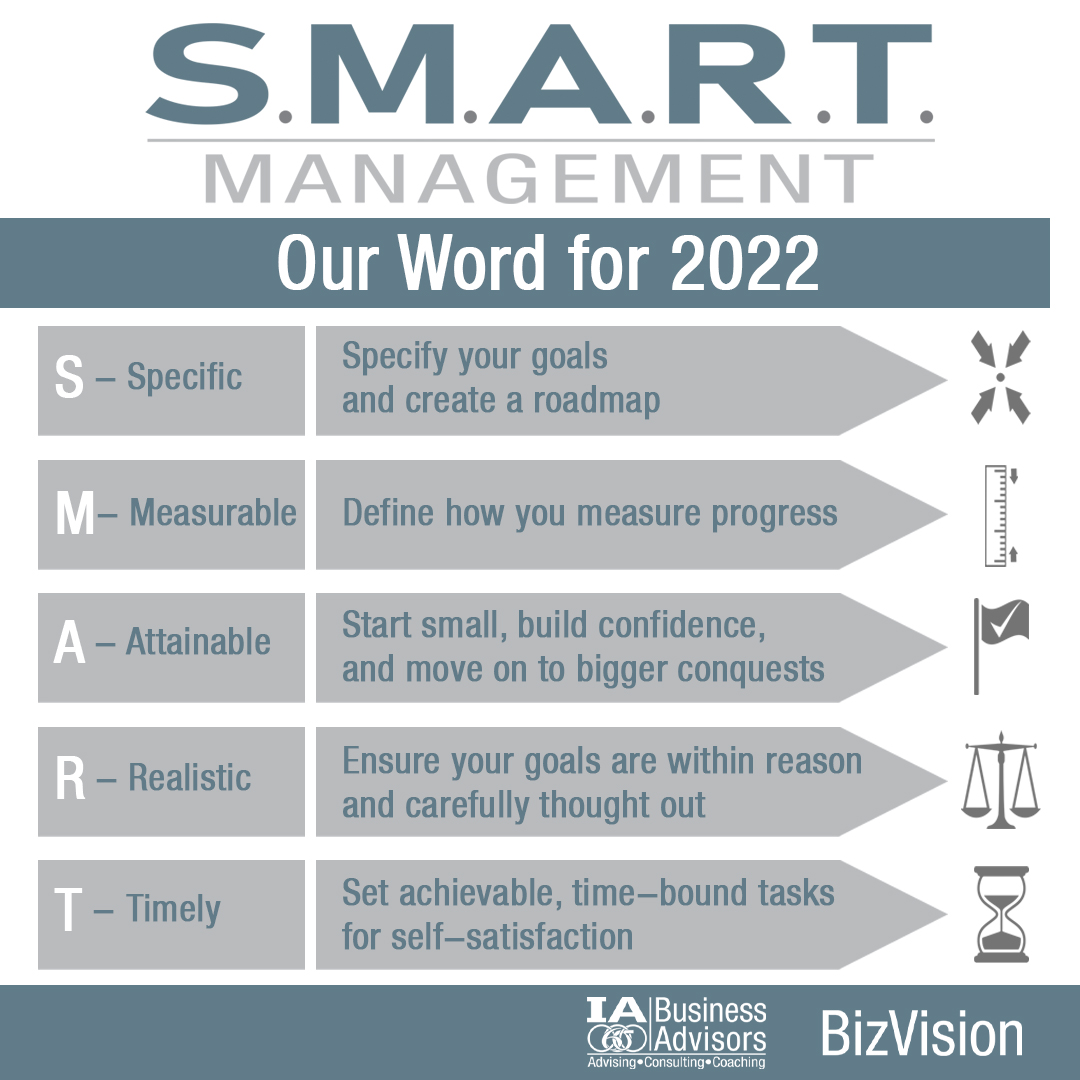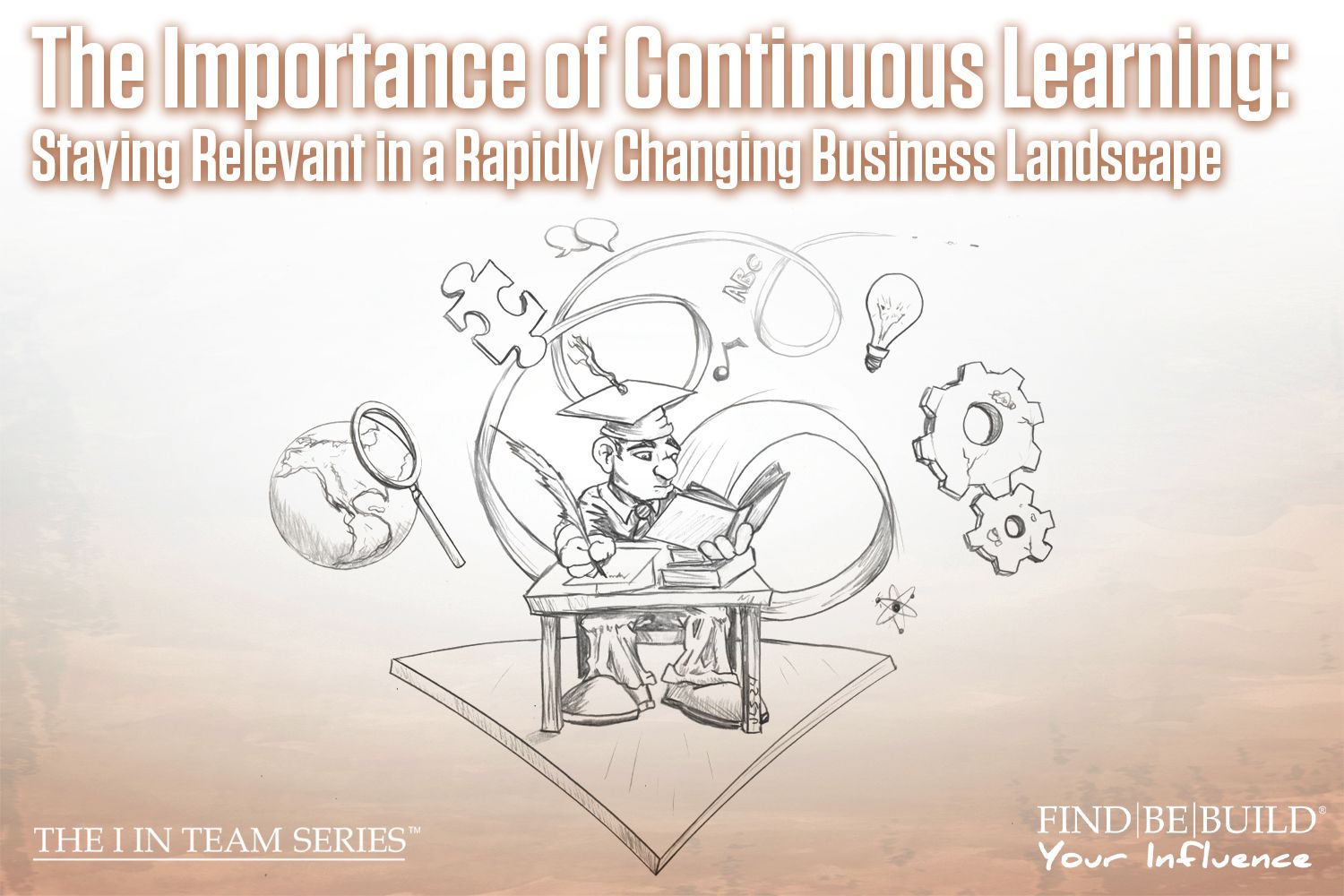Spring Cleaning! Refresh your goals using S.M.A.R.T.

By: Billy Banks
It’s almost the end of March. The end of the quarter looms. When the calendar flipped to 2023, many of us had ambitious goals. Sleep better. Lose weight. Go to the gym. Read more. We dove headfirst into the deep end. Made some changes. Did it for a few weeks. And then, life happened. A sick child. An unexpected project or client issue at work. Slowly, and then all of a sudden, we fall back into our old patterns.
We all struggle to achieve our goals, and that’s not due to any innate failure in us. In fact, according to a study by the University of Scranton , 92% of people fail to achieve the goals they set out to accomplish in the New Year. That means almost every single person fails to follow through on the resolutions they set for themselves at the start of the year. So why is this the case?
Most often, we set vague or unrealistic goals for ourselves. Or we base our goals on what others are doing, versus what we actually want to do. Then, when we don’t see immediate results, our energy and inspiration dwindles, and the goal gets dropped.
Another mistake – we don’t account for what needs to change. If we are going to go to the gym or learn a new skill at work, we don’t get to add hours to the day, we need to subtract somewhere else. When we don’t, we get squeezed for time and drop the new goal or habit that doesn’t fit our schedule because we didn’t give it the time and space to take root.
A new S.M.A.R.T. way forward:
With the new quarter, we have a chance to start anew. As the green shoots of spring break through the surface, now’s a great time to do some Spring Cleaning with your goals. So, get them out, dust them off, and let me show you a better way forward:
Like most people, I was great at setting poor goals. Either they were overly ambitious, or I failed to set myself up to succeed. Frustration followed as early momentum quickly faded. But after being introduced to the S.M.A.R.T. framework, it all started to make sense.
Goal setting works best with an action plan. Take it from someone who has failed at this endeavor many times over! Setting goals requires plenty of thought and purpose. That’s where the “S.M.A.R.T. goals,” framework comes in handy.
To ensure that your S.M.A.R.T. goals are clear and achievable, they should have the following characteristics:
- S pecific – What precisely do you want to do?
- M easurable – How will you know if you’ve been successful? What are the milestones for attaining the goal?
- A ttainable – Do you have the right skills, tools, resources, etc. needed to accomplish your goal?
- R ealistic – Is it the right time? Does it relate to your values and dreams?
- T imely – What is the timeline for accomplishing your goal?

How to use the S.M.A.R.T. process for achieving your goals:
Each component of the S.M.A.R.T. methodology works in its own way to create goals that are well-planned, concise, and trackable. This process provides an action-oriented methodology for achieving goals repeatedly over time. Plus, it works whether your goal is a professional one, or one of a personal nature.
- S pecific
The key here is to be clear and precise. Goals, without clarity surrounding the specifics, are more like unattainable dreams. Yet, when you take the time to slow down, clarify your thinking, and specify exactly what needs to be done, you greatly increase your odds for success. Just like when you communicate clearly with your partner or coworkers.
Moreover, when your goals are too vague, it can be difficult to know where to begin, and further, after starting, what steps to take in which order. This leads to inertia and frustration. To avoid this, use the questions below to guide your thinking as you craft your goal:
- What do I want to accomplish?
- Why is this goal important to me?
- Where do I need to be (physically, mentally, emotionally) in order to do it?
- Who else is involved?
- What other resources or skills are required?
- M easurable
What evidence or milestones will signal that you are making progress towards your goal? Measuring your progress helps you stay on track and stay motivated. Moreover, by breaking your goal down into smaller, more manageable pieces and measuring your progress as you go, you create forward momentum for yourself and can more tangibly see yourself getting closer to your goal.
At work, you might use your project management tools to create a roadmap for your goal. Breaking down your goal into smaller steps and milestones and tracking your progress as you go. For personal goals, I use Google Sheets to track my progress digitally. Other times, I use my whiteboard, Post-It notes or some other visual cue to help me see my progress over time. Many people, myself included, find that using tools to help us visually see our progress helps us continue along towards meeting our goal.
To help you measure your goals, ask yourself the following questions:
- How will you know if progress is being made towards your goal?
- How will you measure it?
- What are the key milestones or steps?
- A ttainable
Next, your goal needs to be attainable, in other words, something that can be achieved. When we subscribe to the “Go Big or Go Home” mentality for goal setting, it can detract from our motivation. Goals like “Write a book” or “Get a promotion” are huge undertakings. Daunting even. Which is why people often fail to achieve them. Instead, break them down into their component parts and then make a smaller plan for achieving each step towards the larger goal. In this way, instead of focusing on the mountain looming overhead, you are focusing on the next foothold, conquering the mountain one step at a time.
The key is to make sure that your weekly actions towards a goal stretch your abilities, but still fit into your existing world of responsibilities and commitments. Writing one page a day or scheduling a biweekly 1-on-1 with your boss likely fit much better into your existing schedule. Trying to do more than you are able to at the outset could lead to stress and even disinterest. That creates anxiety. And that anxiety prevents progress. Better to start small, create some small wins and momentum, and then gradually increase your time and effort commitment.
Attainable goals typically answer one or both of the following questions:
- How will I accomplish this goal?
- How attainable is the goal given my other constraints (e.g., time, money, or skill set)?
- R ealistic
Making sure your goal is realistic means ensuring that it is relevant and aligned with where you want to go. For example, is writing a book a passion project, or something that will advance your career? Or, do you want that promotion, or do you prefer to be an individual contributor?
In addition, sometimes the timing is off for a certain type of goal, or you may not have access to the right people or the required skills to complete it. Some questions to ask yourself to make sure your goal is both realistic and relevant include:
- Is this goal aligned with where I am trying to go?
- T imely
The last and most important step in achieving your goal is setting a target date for completion. Having milestones to work towards or deadlines to meet provides added motivation. They can also help prevent your day-to-day tasks from overwhelming your longer-term goals. Key questions to ask yourself include:
- By what date will this goal be completed?
Now, let’s pull all of this together and give you two examples, one personal and one professional, of how to convert a typical goal into a S.M.A.R.T. one.
Personal Goal: I want to get in better shape.
S.M.A.R.T. Goal Components:
- S pecific: I will join a running club and run with them every Monday, Wednesday, and Friday morning. On Sundays, I will play soccer with my friends. The running club and my friends will keep me accountable for showing up.
- M easurable: The running club will hold me accountable for running three days a week and help me to improve my time to run a mile with the goal of getting it under 7 minutes.
- A ttainable: I was in good shape before having kids and I almost never got injured while playing sports. The running club runs early in the morning, and I can get up earlier, go for a run with them, and be home in time to get ready for work. I will have to go to bed 30 minutes earlier each night.
- R ealistic: Lately, I have felt more fatigued and keep injuring myself playing recreational soccer. I want to be able to keep playing soccer with my friends and run around with my kids on the weekends. Plus, when I stay up late watching TV, I tend to hit the snooze button in the mornings.
- T imely: I’ve signed up for a 10K in 6 months.
Complete S.M.A.R.T. Goal:
I will join a running club and run with them 3 days a week in the morning and play soccer on Sundays. In 6 months, my average time to run a mile will be under 7 minutes and I will run in the neighborhood 10K.
Professional Goal: I want to get promoted at work.
S.M.A.R.T. Goal Components:
- S pecific: Our company has indicated that it wants to hire or promote someone to manage our team in the next 6 months. I will create a 90-day plan to share with my boss in our next 1-on-1 to get their feedback and demonstrate my interest in the role. In the first 30 days, I will teach the team a new skill. In the second 30 days, I will lead one team meeting. In the third 30-days, I will lead two of the weekly team meetings.
- M easurable: I will track progress towards these goals during my biweekly 1-on-1s with my boss. I will ask to be put on one new project or take on an additional responsibility during each 1-on-1. I will also take classes on Leading Teams and Leadership through our online training program.
- A ttainable: I’ve been in this position for six months now, and I have previous management experience at my prior job.
- R ealistic: As our company grows, I want to be in a position to grow as well. I have past experience and the desire to learn new skills and take on new responsibilities.
- T imely: I will become a better leader by the end of this quarter and apply for the role when the position opens.
Complete S.M.A.R.T. Goal:
I will meet with my boss and present my 90-day plan for earning the promotion. I will ask to take on additional responsibilities to demonstrate my desire and willingness to win this role. I will also take one course on leadership and managing teams each month.
When we take the time to get S.M.A.R.T. with our goals, we increase the odds we will be successful. The key is to be as clear as possible in what you want to accomplish and how you plan to do so. By setting realistic and achievable goals, you are half-way done. Tracking our progress provides the roadmap for success and the accountability to get it done. Apply the S.M.A.R.T. methodology to all your goals and you’ll never miss a New Year’s resolution again!
The post Spring Cleaning! Refresh your goals using S.M.A.R.T. appeared first on IA Business Advisors.











